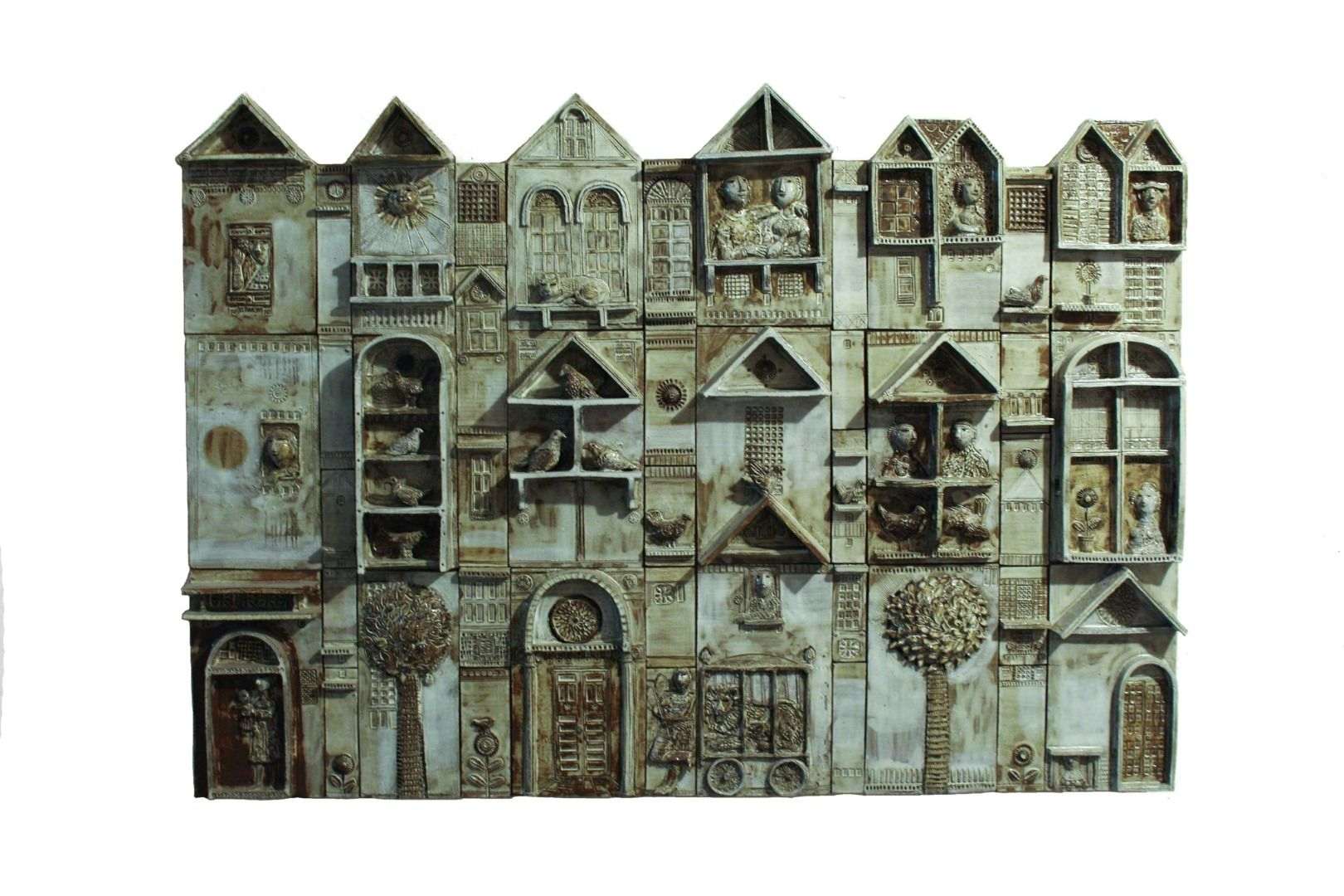Kenneth Dierck (1927-2012) was a printmaker and ceramist born in Tacoma, Washington, known for his whimsical and figural works with a folk style. Nationally and internationally praised for both his lithograph and silkscreen prints, and later for his ceramics and tile work, Dierck did not fully develop his ceramic career until the 1970s. He received both his BA and MFA from University of Washington located in Seattle, Washington, and he completed his post-graduate studies in ceramics through a scholarship with Hal Riegger and Edith Heath at the California College of Arts and Crafts in Oakland, California. Soon after obtaining his degree, he began to teach ceramics at Merritt College and Berkeley Adult School in Berkeley, California, a position he held for twenty-eight years. Additionally, Dierck worked in his own ceramic studio in El Cerrito, California for thirty years, where he created sculpted pot forms and large-scale tiles in relief. Dierck was particular about his style, and stated in his curriculum vitae, “I try to achieve a balance between aesthetic judgement and personal feeling in my work. Continued technical investigation and resulting heightened sense of the innate possibilities of ceramic materials make my desire for timeless and serene imagery feasible. Although the imagery in my tiles is achieved through a necessary complexity of multiple applications of color over both built-up and inscribed clay, the resulting arrangement of form aims to preserve a spontaneous simplicity and an evocation of mystery.” The simplicity of color and decoration in his works adds to the whimsicality of his soft imagery that contrasts with their mysterious nature. Dierck is represented in the permanent collections of the Everson Museum of Art and the San Angelo Museum of Fine Arts, as well as in private collections. Dierck’s works contain a sense of mystery and displacement, as he built his flatly formed clay pieces in varying sizes with dynamic features. As single slabs or as large assemblages from smaller tiles, there is a sense of tension and suffocation. Yet, because the sculptures often recall nature in subject matter, there is a paradox in this strain between the medium and the subjects. Innocent City is a large-scale tile illustration of a city apartment building. This grand piece shows Dierck’s skill and expertise with clay, although he is also known for his tile work in smaller proportions. While flat, this piece is anything but static, due to the deep reliefs from carving, incising, and stamping, and from the protruding elements. Birds rest on windowpanes, inside of roofs, and on top of plants, a couple embraces, neighbors chat, the sun shines, and tree leaves sway. The flat yet detailed figures recall the style of Byzantine art, specifically mosaics and wall paintings. Additionally, recalling his early career as a printmaker, Dierck treats the clay as a canvas, making impressions and designs as he would with his prints. He glazes his works as if using paint, adding to the juxtapositions in his whimsical and often figurative work. Innocent City is an example of narration and illustration in clay. Functioning similarly to that of a children’s book illustration, the viewer is encouraged to put narratives together based on the disparate elements in each of the panels. For example, the caged lion in one of the central panels is an incongruent story from the other panels, and would have been recognizable to the viewer as a particular narrative. This clever aspect of narration by Dierck showcases his storytelling capabilities through clay. Innocent City is currently on display in A Legacy of Firsts: The Everson Collects, an exhibition that examines over one hundred years of the Museum’s collecting priorities, from the Museum’s earliest acquisitions in 1911 to work acquired in 2019.
-Tiffany Miller, Curatorial Intern


